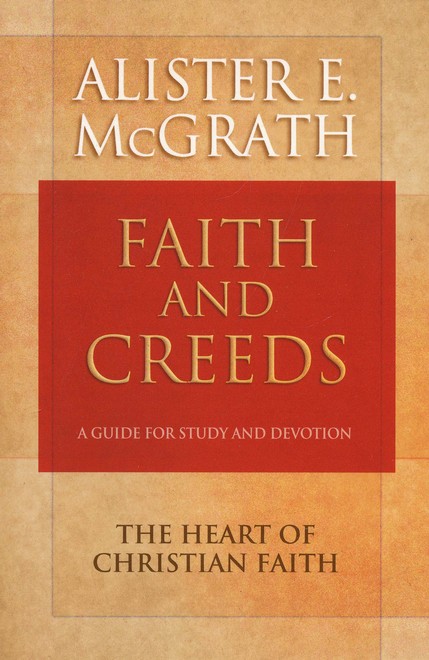It’s easy to find people in the pews reciting the words out of rote memory, despite having never spent time reflecting on their deeper meaning. Other denominations—like my own, which is traditionally non-creedal—would hardly ever recite creeds during corporate worship despite the fact their leadership would vehemently defend the content of both the Apostles’ and Nicene Creeds.
Alister McGrath’s Faith and Creeds: A Guide for Study and Devotion seeks to identify the core beliefs all Christians accept as true, and, more importantly, how Christianity’s historic creeds unite all believers under the same Christian faith. This faith is a widely diverse thing; the creeds are the summarized, compact essentials that allow for unity amid massive diversity. The creeds aren’t equal to, and by no means supersede, the authority of the Bible (51-52); rather, they serve as frameworks for understanding scriptural truth and as teachers guiding us through some of the more difficult doctrines (102).
Big Picture
This short work is made up of five chapters, all of which add up to only 108 pages of content. McGrath states this is first in a series of five books tracking the essentials of the Christian faith (86).

Faith and Creeds: A Guide for Study and Devotion
Alister E. McGrath
The first chapter opens by introducing the concept of “Big Picture” and asserting that everyone has one (13). McGrath uses the phrase in a similar manner to how the term “worldview” has come to be understood. We don’t interpret the world around us by use of strict rationalism; instead, we work from presuppositions that are themselves influenced by our “Big Picture” view of the world. McGrath isn’t therefore aiming to persuade readers to adopt a merely general “Big Picture,” but an essentially Christian one.
Chapter 2 introduces the functionality of the creeds in sync with one’s “Big Picture,” namely, their role as map (30), lens (32), and light (35) in a world full of secular ideas and spiritual darkness. Chapter 3 then examines the role of creeds in communicating the mysteries of the faith that, in many ways, are incapable of being confined to words. The relationship found in Christ must be experienced in order to be understood in all its facets; any attempt to explain it, then, will inevitably come up short. Chapter 4 gives a succinct history of the development of creeds, from their development out of the Scriptures to their early position of unifying the Christian body amid the worst types of persecution. Chapter 5 focuses on belief in the creeds and in the Scriptures on which they’re founded, as well as on their direct effect on the way we live.
Short and Sweet
Faith and Creeds is remarkable in multiple ways, but is only an introduction to a forthcoming series in the same vein as C. S. Lewis’s Mere Christianity. It whets the appetite of the reader and promises to satisfy his thirst in future installments. The book’s brevity and readability could easily cause it to be confused with the pop Christian books currently flooding the market, but this work stands head and shoulders above such competition. It may not have the textbook length or philosophical language of a full course meal, but it makes a wonderful, even gourmet, dessert.
Faith and Creeds is the type of work that lingers in your mind long after you devour its contents. As I read the first line to the Apostles’ Creed, “I believe in God, the Father almighty, creator of heaven and earth,” I’m instantly reminded of the personal nature of my faith. It may be the faith of my family, my church, and my spiritual heritage, but it is my faith. This faith is something that, at best, is difficult to constrict into words and can only be fully appreciated and understood when experienced (41-44).
Creedal Community
This experience was never meant to be celebrated in isolation. The church is a community centered on the truth of Scripture, and the creeds are by their nature communal. McGrath says he does three things when reciting the creeds:
First, I am remembering the “Big Picture” that underlies the Christian faith. Second, I am affirming that I am part of this believing community. And third, I am declaring my willingness to explore what I have not yet encountered and affirmed what I have not yet understood. (77)
The creeds remind us of the central faith that binds all believers together across denominational lines and ecclesiastical preferences. This emphasis on community doesn’t negate the importance of denominational distinctives, but merely puts them in their correct place. The differences between denominations aren’t frivolous by any means, but they need to be viewed like disagreements that arise within a large family—not as war lines between enemy countries.
Modern culture is rapidly becoming more secular and anti-Christian, and believers aren’t helping things when they think of the church as encompassing only their denomination. McGrath has invited us to look beyond our own “tribes” for a moment to behold the grand family of faith united by those powerful Nicene words: “We believe.”































